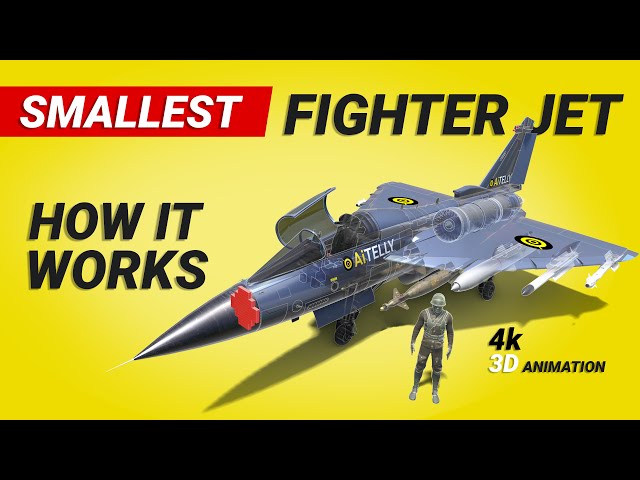Indian Air Force
What are the key design features of the Tejas fighter aircraft?
The Tejas fighter aircraft stands out as one of the smallest light multirole fighter jets in the world. Its distinctive design incorporates a single engine and delta wing configuration, making it highly maneuverable and efficient. These design elements contribute to the aircraft's compact size while maintaining its capabilities as a multirole combat jet. The Tejas was developed as a replacement for India's aging MiG-21 fleet and represents India's advancement in indigenous defense technology.
Watch clip answer (00:06m)What are the stealth materials being developed for India's AMCA fighter jet and who is developing them?
The stealth materials for India's AMCA fighter jet are special materials designed to reduce radar cross-section signature, making the aircraft less detectable by radar systems. These materials have been indigenously developed within DRDO labs, demonstrating India's commitment to self-reliance in defense technology. The Aeronautical Development Agency (ADA) has further refined these materials by collaborating with industry partners and NIL to develop the manufacturing processes. This collaborative approach between research institutions and industry represents a significant advancement in India's indigenous fighter jet technology capabilities.
Watch clip answer (00:21m)Does the Tejas fighter jet have a gun or cannon system?
The Tejas Mark 1 does not have any gun system installed. However, the newer version, Mark 1A, will be equipped with a Russian Gryazeville Shipunov 23mm twin barrel cannon with 220 rounds. This cannon has an effective range of 1000 meters, enhancing the aircraft's close combat capabilities. The upgrade represents a significant improvement in the Tejas fighter's armament systems as it evolves from its original design.
Watch clip answer (01:34m)Does the Tejas fighter aircraft have a gun system, and what are its specifications?
The Mark 1 version of the Tejas does not have any gun, but the newer Mark 1A version will be equipped with the Russian Gryazeville Shipunov 23mm twin barrel cannon with 220 rounds of ammunition. This cannon has an effective range of 1000 meters, enhancing the aircraft's combat capabilities. The Tejas features a versatile weapons system compatible with armaments from various countries including the US, France, Russia, and India's own DRDO-developed weapons.
Watch clip answer (01:18m)What are the key specifications and capabilities of the Tejas multirole fighter jet?
The Tejas is one of the world's smallest supersonic multirole fighter jets, measuring 13.2 meters in length with an 8.2-meter delta wing configuration. It features a 16,000-meter service ceiling, 3,000 km range, and 5,300 kg payload capacity. The aircraft is powered by a General Electric F414-GE400 afterburning turbofan engine. The Tejas incorporates advanced technology including an indigenously built UTAM Active Electronically Scanned Array radar capable of tracking 50 targets and engaging 4 simultaneously, modern digital cockpit, and fly-by-wire controls. It can deploy various weapons including Vympel R73 short-range missiles, Astra BVR missiles, and precision-guided munitions, making it a cost-effective and highly maneuverable fourth-generation fighter.
Watch clip answer (09:11m)What is India's approach to stealth fighter technology amid the potential F35 offer from the US?
India is pursuing a dual strategy regarding stealth fighter technology. While open to considering the US F35 offer, India is simultaneously developing its indigenous AMCA stealth fighter project with ambitious goals to deliver seven squadrons by 2035. This indigenous program aims to position India among an elite group of stealth aircraft manufacturers that currently includes only the United States, Russia, and China. The timing of these developments highlights India's strategic vision to both collaborate internationally while developing domestic aerospace capabilities.
Watch clip answer (00:17m)


